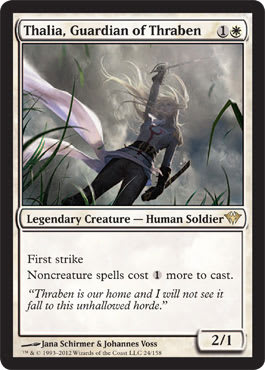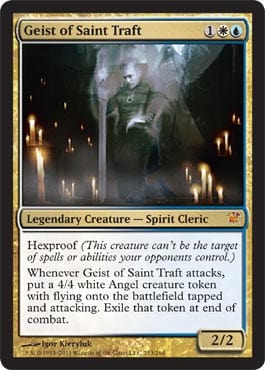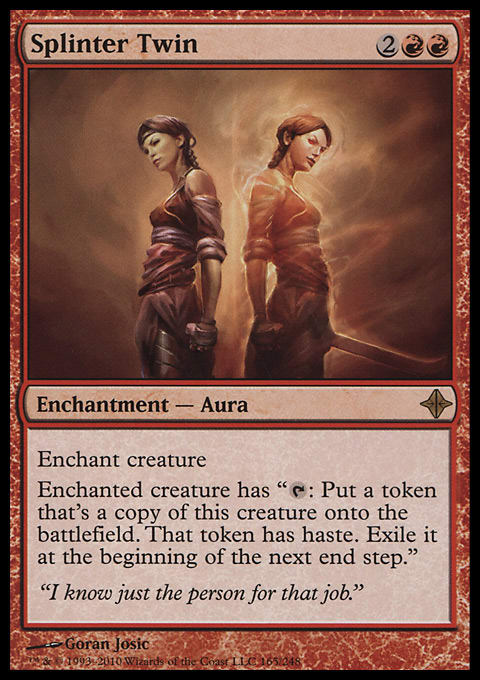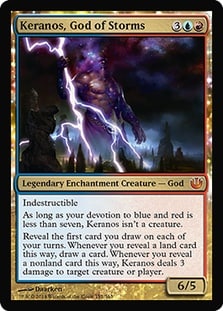Hey, everyone!
I’m back from Grand Prix Pittsburgh, and I came close to posting a cash finish with Collected Company Zoo. Before we go too deep, here’s what I played:
Collected Company Zoo ? Modern | Kyle Boggemes
- Creatures (27)
- 1 Birds of Paradise
- 2 Kitchen Finks
- 2 Loxodon Smiter
- 2 Scavenging Ooze
- 4 Knight of the Reliquary
- 4 Noble Hierarch
- 4 Qasali Pridemage
- 4 Tarmogoyf
- 4 Wild Nacatl
- Spells (11)
- 3 Collected Company
- 4 Lightning Bolt
- 4 Path to Exile
- Lands (22)
- 1 Mountain
- 1 Plains
- 2 Forest
- 1 Gavony Township
- 1 Ghost Quarter
- 1 Sacred Foundry
- 1 Temple Garden
- 2 Stomping Ground
- 4 Arid Mesa
- 4 Windswept Heath
- 4 Wooded Foothills
- Sideboard (15)
- 1 Burrenton Forge-Tender
- 1 Kataki, War's Wage
- 1 Blood Moon
- 2 Magus of the Moon
- 1 Eternal Witness
- 2 Choke
- 2 Stony Silence
- 1 Grim Lavamancer
- 2 Ethersworn Canonist
- 2 Thalia, Guardian of Thraben
My final record was 9–6 with two byes, but I began the event 71 with a loss to Corey Burkhart in the final round of Day 1. Here’s a quick breakdown of my matches:
Day 1
Round 3: U/w Merfolk 2–1
Round 4: Tron 2–1
Round 5: G/U Infect 0–2 (feature match against Brad Nelson)
Round 6: Grixis Delver 2–1
Round 7: Esper Zur Control 2–0
Round 8: Grixis Twin 2–1
Round 9: Grixis Control 1–2 (feature match against Corey Burkhart)
Day 1 Record: 7–2
Day 2
Round 10: Tron 2–1
Round 11: Jund 1–2
Round 12: R/W/U Control with Bring to Light/Scapeshift 2–1
Round 13: G/W Tron 1–2
Round 14: Jund 1–2
Round 15: Amulet Bloom 1–2
Final Record: 9–6
The deck slightly underperformed, but I felt that every matchup was close. In addition, I had an abysmal Game 1 win percentage of just 15%. Matchups like Tron and Amulet Bloom felt fair with the sideboard, but I wasn’t able to close fast enough with nondisruptive creatures in the last few rounds.
There were a few changes I made that deviated from the traditional Collected Company list developed by Paul Rietzl and Matt Sperling:
- I cut two Loxodon Smiters for two Kitchen Finks to help the burn and Jund matchup. Overall, the Smiters performed better, but I didn’t face Burn.
- I replaced the Kessig Wolf Run with Gavony Township. The only time I liked Kessig Wolf Run was against Amulet Bloom so I would be stronger against Hornet Queen after sideboard.
- I replaced the third Scavenging Ooze with a fourth Qasali Pridemage. I stick by this change because Affinity is a weak matchup, and exalted is good in all matchups. The two Scavenging Oozes were good overall, but I don’t want to draw two in a game.
The major draw to playing this deck is the power of the sideboard. If I were to play Zoo again, I would include more of the sideboard cards in the main to shore up the first game against combo decks; Thalia, Guardian of Thraben and Magus of the Moon are good cards to steal wins.
Ethersworn Canonist was a very impressive sideboard card that I believe is underplayed. Here are some of the cool applications:
- Bring to Light can only cast artifacts.
- Snapcaster Mage can’t flash back spells.
- Storm can’t win with it in play and doesn’t die to Grapeshot since the Storm player needs to play a spell first.
- Ad Nauseam can’t win with it in play because the Ad Nauseam players needs to cast Lightning Storm.
- Living End can’t cascade into the namesake card and cast it.
- Amulet Bloom can’t cast a Summoner's Pact on the same turn as Primeval Titan.
- Amulet Bloom can’t have the nut draw of turn-two Summer Bloom into Primeval Titan thanks to Amulet of Vigor.
- Hive Mind gives you a turn before the player can cast a Pact.
- Elf decks can only cast a single creature a turn.
Going forward, the Canonist will keep its spot in the sideboard because of the versatility.
I was also a big fan of Burrenton Forge-Tender even though I didn’t face Burn. My Magus of the Moon and Thalia survived Pyroclasm effects out of Tron, Bloom, and Scapeshift. I want to try and find room for an additional copy because the best Collected Company involves Magus of the Moon and Forge-Tender for protection against some combo decks. I also wouldn’t mind an additional hate card against Burn. Kor Firewalker is clearly more powerful against Burn, but I really like the versatility for the Forge-Tender.
Choke was good for me despite a couple games playing against blue decks with Sulfur Falls and Darkslick Shores on the battlefield. My Grixis Twin opponent only lost a single Island that ended up deciding the game; he had five lands with Grave Titan and Wurmcoil Engine in hand. I view Choke as a disruptive element rather than a lockout spell. The same goes for Blood Moon effects against Tron because I actually lost to hard-cast Thragtusks and Wurmcoil Engines off Mountains.
Eternal Witness overperformed for me, but I expected to have an easier time against Jund and Grixis. Whenever I ’boarded in the Witness, I wanted to draw it every turn. Going forward, I could see playing a second copy since it’s insane to reveal off Collected Company.
My Get Your Game On (GYGO) teammate Stu Parnes played the same seventy-five as I did, and he said Kataki, War's Wage wasn’t good enough to beat Affinity. I could see playing an additional Stony Silence to help out against Affinity and Tron. Winning Game 1 can be difficult, so I need to win both in post-’board games to take the match.
If I were to play Naya Zoo again, I would try this list:
Naya Zoo ? Modern | Kyle Boggemes
- Creatures (26)
- 1 Scavenging Ooze
- 2 Loxodon Smiter
- 2 Magus of the Moon
- 3 Qasali Pridemage
- 4 Knight of the Reliquary
- 4 Noble Hierarch
- 4 Tarmogoyf
- 4 Wild Nacatl
- 2 Thalia, Guardian of Thraben
- Spells (12)
- 4 Collected Company
- 4 Lightning Bolt
- 4 Path to Exile
- Lands (22)
- 2 Forest
- 2 Plains
- 1 Gavony Township
- 1 Ghost Quarter
- 1 Sacred Foundry
- 1 Temple Garden
- 2 Stomping Ground
- 4 Arid Mesa
- 4 Windswept Heath
- 4 Wooded Foothills
- Sideboard (15)
- 2 Ethersworn Canonist
- 2 Burrenton Forge-Tender
- 3 Stony Silence
- 2 Eternal Witness
- 1 Blood Moon
- 2 Choke
- 2 Grim Lavamancer
- 1 Scavenging Ooze
The main-decked Thalia will give me some game before sideboard against some of the noninteractive decks. It plays poorly with Collected Company, but I think it’s still worth adding. Speaking of Collected Company, I added a fourth copy to find cards like Magus of the Moon and Thalia. I didn’t want to cut the fourth Pridemage or second Scavenging Ooze, but something needed to go in order to make room for the hateful creatures. The Kitchen Finks leaving wasn’t as big of a loss.
The mana base is largely the same, but I cut the Mountain for a second Plains; this is to have more non-Mountain basics to support main-decked Magus of the Moon. I only want Mountain against Burn so I can cast Lightning Bolt without shocking myself, so there’s a cost to this change. With that being said, I hate drawing the Mountain because I can’t sacrifice it to Knight of the Reliquary.
The sideboard doesn’t change too much. I want the second Forge-Tender, as I mentioned before. There’s a second Grim Lavamancer because Merfolk was a close matchup, and that could push it over the edge. Scavenging Ooze and Eternal Witness are key against Jund and Grixis, which are large pieces of the metagame.
I’m not sure if this is my favorite deck anymore, but it’s still a solid choice if you like fair decks.
Here’s a different flavor of Zoo that Brian Liu used to Top 16 the Grand Prix in Pittsburgh:
Zoo ? Modern | Brian Liu
- Creatures (26)
- 1 Scavenging Ooze
- 2 Qasali Pridemage
- 3 Voice of Resurgence
- 4 Knight of the Reliquary
- 4 Noble Hierarch
- 4 Tarmogoyf
- 4 Wild Nacatl
- 4 Geist of Saint Traft
- Planeswalkers (2)
- 2 Elspeth, Knight-Errant
- Spells (10)
- 1 Collected Company
- 1 Dromoka's Command
- 4 Lightning Bolt
- 4 Path to Exile
- Lands (22)
- 1 Forest
- 1 Plains
- 1 Breeding Pool
- 1 Hallowed Fountain
- 1 Horizon Canopy
- 1 Sacred Foundry
- 1 Skarrg, the Rage Pits
- 1 Stomping Ground
- 1 Temple Garden
- 2 Stirring Wildwood
- 3 Arid Mesa
- 4 Windswept Heath
- 4 Wooded Foothills
- Sideboard (15)
- 2 Worship
- 3 Unified Will
- 2 Blood Moon
- 1 Magus of the Moon
- 1 Fracturing Gust
- 2 Grim Lavamancer
- 2 Stony Silence
- 2 Gideon Jura
I like this particular list because I was already a fan of Elspeth, Knight-Errant. Brian took this a step further and added blue for Geist of Saint Traft to form a killer combo. Since Elspeth is the primary 4-drop, he was also able to play more noncreature cards in the sideboard; Collected Company can restrict card choices. An interesting hate card is Worship because Geist of Saint Traft has hexproof and Voice of Resurgence is hard to kill for good. Worship is good against Burn and can be decent against Affinity as long as you aren’t poisoned by Inkmoth Nexus.
Another interesting addition to the sideboard is Gideon Jura. It’s nice to have against Twin decks because it prevents you from dying to the combo, but it is also potent if the opponent ’boards into control. Jund also has a very tough time fighting four Planeswalkers in total, as Maelstrom Pulse is the deck’s only solution.
Skarrg, the Rage Pits is interesting because it’s more mana efficient than Kessig Wolf Run. There’s also the added benefit of a toughness boost for Geist of Saint Traft, but I still prefer Gavony Township.
My plan is to play this deck at a tournament to see if the blue splash is worth it. The Planeswalkers are an interesting avenue because Collected Company was best against the combo decks. If you expect more Tarmogoyf decks, give this a try.
Splinter Twin
Since Splinter Twin won the Grand Prix in Pittsburgh, I naturally gave the main deck a try.
Splinter Twin ? Modern | Alex Bianchi
- Creatures (14)
- 1 Pestermite
- 1 Wall of Omens
- 2 Restoration Angel
- 4 Deceiver Exarch
- 4 Snapcaster Mage
- 1 Kiki-Jiki, Mirror Breaker
- 1 Vendilion Clique
- Spells (23)
- 1 Cryptic Command
- 1 Dispel
- 1 Electrolyze
- 2 Spell Snare
- 3 Remand
- 4 Lightning Bolt
- 4 Path to Exile
- 4 Serum Visions
- 3 Splinter Twin
- Lands (23)
- 1 Mountain
- 1 Plains
- 3 Island
- 1 Cascade Bluffs
- 1 Hallowed Fountain
- 1 Sacred Foundry
- 1 Sulfur Falls
- 3 Celestial Colonnade
- 3 Steam Vents
- 4 Flooded Strand
- 4 Scalding Tarn
- Sideboard (15)
- 2 Dispel
- 1 Stony Silence
- 1 Engineered Explosives
- 1 Keranos, God of Storms
- 2 Blood Moon
- 1 Negate
- 1 Wear // Tear
- 1 Pia and Kiran Nalaar
- 1 Celestial Purge
- 1 Elspeth, Sun's Champion
- 1 Flashfreeze
- 2 Timely Reinforcements
I played this deck at Get Your Game On and went 4–0. Overall, the deck was solid; this was to be expected because Alex Bianchi went 16–2 at the Grand Prix. There were a few games I won using the Splinter Twin Combo, but Celestial Colonnade turned the corner quickly as an alternate plan. Wall of Omens was impressive because it blocked opposing Snapcaster Mages and my opponent didn’t want to use removal on it. I never blinked it with Restoration Angel or used a Splinter Twin on it, but it still overperformed.
The Kiki-Jiki, Mirror Breaker didn’t do anything for me; I drew it once without three red sources in play. It’s an awkward spell to draw because I need to plan on fetching three red sources to cast it, but there’s only a single copy.
Your spells go bigger than Grixis decks typically do thanks to Restoration Angel and Celestial Colonnade, so fair decks are better matchups. I only want the Splinter Twin combo against noninteractive decks. It can be difficult to accurately predict the Modern metagame, and I won’t have answers to everything—the best defense is a good offense.
Another draw to this deck was the power of white sideboard cards. As I mentioned before, I played the identical main deck but made some changes to the sideboard:
Splinter Twin ? Modern | Kyle Boggemes
- Sideboard (15)
- 2 Stony Silence
- 1 Magma Spray
- 1 Lightning Helix
- 2 Dispel
- 2 Engineered Explosives
- 1 Izzet Staticaster
- 1 Keranos, God of Storms
- 2 Pia and Kiran Nalaar
- 1 Negate
- 2 Blood Moon
Stony Silence is a very powerful Modern sideboard card, so I definitely wanted a second copy. It’s very strong against Tron and Affinity.
Keranos, God of Storms underperformed despite me ’boarding into a control deck. I already have Restoration Angel and Celestial Colonnade to close out a game, so Pia and Kiran Nalaar was the more effective bomb. I was hesitant to include Elspeth, Sun's Champion, but it does good work against midrange decks and will deserve a spot in the future.
Lightning Helix and Magma Spray are better than Timely Reinforcements because you already have game against Burn. I can’t tap out for Timely Reinforcements because Burn will be ready with Skullcrack and Atarka's Command. Helix and Spray are less clunky, and I want them against Infect, Affinity, and Merfolk, too.
Going forward, this is a good choice for a Modern event, but the cat is now out of the bag. The plan of Restoration Angel with Kiki-Jiki took opponents by surprise, but this deck is now a known quantity. The white cards give me plenty of game against the fair decks but struggle against combo compared to Grixis Twin.
Speaking of Grixis Twin, this is the deck I’m currently working on:
Grixis Twin ? Modern | Kyle Boggemes
- Creatures (13)
- 4 Deceiver Exarch
- 4 Snapcaster Mage
- 2 Tasigur, the Golden Fang
- 3 Jace, Vryn's Prodigy
- Spells (24)
- 1 Dispel
- 1 Go for the Throat
- 1 Terminate
- 2 Remand
- 3 Kolaghan's Command
- 4 Lightning Bolt
- 4 Inquisition of Kozilek
- 4 Serum Visions
- 4 Splinter Twin
- Lands (23)
- 1 Mountain
- 1 Swamp
- 3 Island
- 1 Blood Crypt
- 1 Creeping Tar Pit
- 1 Tectonic Edge
- 1 Watery Grave
- 2 Blackcleave Cliffs
- 2 Darkslick Shores
- 2 Steam Vents
- 4 Polluted Delta
- 4 Scalding Tarn
- Sideboard (15)
- 2 Pia and Kiran Nalaar
- 1 Duress
- 2 Dispel
- 1 Negate
- 2 Blood Moon
- 1 Terminate
- 1 Engineered Explosives
- 1 Mulldrifter
- 1 Magma Spray
- 1 Kolaghan's Command
- 1 Spell Snare
- 1 Vendilion Clique
The main draw to playing Grixis over American Twin is Inquisition of Kozilek. I can take pesky cards like Rending Volley and Abrupt Decay out of the opponent’s hand. Inquisition also plays well with Jace, Vryn's Prodigy because I can take Lightning Bolt to protect it. Jace has a lot of synergy with the deck because you have to kill it, which means my Twin combo is more likely to be uninterrupted. Kolaghan's Command is also more powerful when Jace dies early; making your opponent discard and card and rebuying Jace is a scary play.
The disruption suite is very cheap and very versatile, so I feel I have a chance against any deck. Grixis Twin plays out similarly to Grixis Control except there’s a more focused game plan. I have plenty of removal: four Lightning Bolt, one Terminate, one Go for the Throat, and three Kolaghan's Command. This deck can kill every creature in play, but it also has the plan B of killing with Splinter Twin.
The card selection is very powerful as well. Serum Visions can be cast from the graveyard with Snapcaster Mage and Jace. The looting effect of Jace makes it easier to find the Twin combo as well as discard excess Splinter Twins. Tasigur, the Golden Fang is also another good way to draw cards, but be prepared to receive Inquisition of Kozilek. This isn’t a terrible thing because it makes winning with Twin easier in the late game.
My sideboard plan is to morph into a control deck against interactive decks. Aside from Blood Moon, I can ’board in the other thirteen cards to accomplish this plan. Pia and Kiran as well as Mulldrifter are great creatures to recur with Kolaghan's Command. I don’t want Keranos because Pia and Kiran is the more versatile win condition.
Blood Moon isn’t amazing in this deck, but I need something extra against Bloom Titan. I will also ’board it in against Tron because I plan on being a combo deck. It’s a fool’s errand to be a control deck with Blood Moon against Tron because the opponent will hard-cast big threats. I also want Blood Moon against Scapeshift because Inquisition won’t take the Bring to Lights or Scapeshifts. I have addressed this matchup by boarding in Negate and Duress, but I still want something extra.
Grixis doesn’t provide amazing sideboard cards specifically against Burn, but I have plenty of efficient spells to add. Spell Snare, Magma Spray, Dispel, Duress, and Negate can all be helpful in disrupting Burn long enough to combo.
Conclusion
Modern remains a wide-open format with multiple angles of attack for the same strategy. We talked about how Zoo can either play Geist of Saint Traft or more hateful creatures to attack combo decks. I still think Zoo is a reasonable choice, but I am more intrigued by the various Twin strategies.
There are also more ways to build Twin than the linear U/R version: Jeskai and Grixis. I prefer the third color so I can easily morph into a control deck with better removal than Roast. The Grixis version has me interested because Jace plays so well with the black spells.
That’s all for this week. I really enjoy Modern, so expect some more articles from me soon with my findings!
-Kyle































